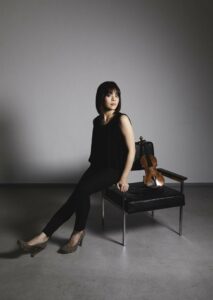MILLION DOLLAR STRINGS
MAY 25 2023 – Lorella Flego
The violin became popular in Renaissance Italy, where it was present in all social classes, being played both in the street and at court. Soon, master fiddlers began to design and manufacture these wonderful instruments, for which three cities in particular became famous: Brescia, Cremona and Venice. The eighteenth century is considered the golden age of violin making, as the craftsmanship of instrument makers reached its peak and the design and acoustics of the violin were perfected. The most beautiful sounding violins in history, the Stradivarius instruments, were created by Antonio Stradivari (1644–1737), who was a native of Cremona. As early as in the sixteenth century, the town gained a reputation as a centre for the production of string instruments. On the basis of the soundboard in a violin dating from 1666, experts have concluded that the young Antonio most likely worked as an apprentice under the celebrated master Nicola Amati. Stradivari’s career was marked by a great deal of experimentation: the first violins were smaller than the later ones and coated with different lacquers. The violins created between 1700 and 1725 are considered the pinnacle of his production due to their perfect proportions and rich acoustics.

Many have wondered why Stradivarius violins, which were made hundreds of years ago, are still considered the best instruments ever made, when we now have so much modern technology available. Research conducted at the University of Texas in 2021 found that both the chemicals and the method used to treat the wood used for Stradivarius instruments affected the acoustics and tone of the instrument. Exactly how the wood was treated is, however, still a mystery, so Stradivarius violins are precious objects of the past that are impossible to copy today. The mystique surrounding Stradivarius instruments continues to ensure their popularity and, more importantly, their value. They are played by top musicians, including Yo-Yo Ma and Julian Lloyd Webber, and can be found in the collections of the Metropolitan Museum of Art, the Library of Congress, the Royal Spanish Collection at the Royal Palace in Madrid, and the Royal Academy of Music in London. The most famous Stradivarius violin, known as the Messiah, dates from 1716 and is considered the best-preserved masterpiece by Stradivari. It is exhibited in a museum in Oxford.

The violin is a very demanding instrument to learn, but this is precisely where its strength lies. Anyone who learns to play the violin can be satisfied with themselves and the path taken, resulting in a positive self-image and increased self-esteem. Another advantage of the violin is its size, as you can take it with you and play it anywhere without any problems, which is why it is also an ideal instrument for playing outdoors. It is a trusted friend that never leaves your side. The violin also allows us to train our concentration and keep our minds young and responsive for longer.

Stradivarius violins have sold for over a million dollars at various auctions. The record price was paid for the Lady Blunt violin, which is named after one of its first owners, Lady Anne Blunt, who was an influential breeder of Arabian horses and a granddaughter of Lord Byron. Her Stradivarius sold for $15.9 million, well above the previous auction record of $3.6 million. As George Eliot (the pseudonym of the writer Mary Ann Evans) once wrote: “’Tis God gives skill, but not without men’s hands: He could not make Antonio Stradivari’s violins without Antonio.” You will have an opportunity to witness the magic of the violin for yourself and experience how it can touch the very depths of the soul at the concert Sparkling, Brilliant on 1 June, featuring the young violinist Jiyoon Lee, who is admired by everyone for her energetic and brilliant interpretations. She herself says that she feels blessed and exactly where she belongs with her instrument. “My goal in life is to continue taking small steps,” Jiyoon Lee recently commented. That sounds confident and wise at the same time, doesn’t it?